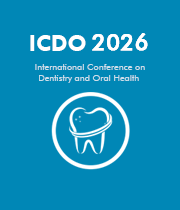Dental Disorders
Dental disorders are a broad group of maladies that affect the structures and functions of the mouth. While most are chronic, resulting from long-term behaviors, such as poor oral hygiene or smoking, others represent medical emergencies that require immediate attention. Some of the more common dental disorders include gingivitis, caries (cavities), periodontal disease, bruxism, TMJ disorders, and oral cancer. Gingivitis is the most common form of gum disease, caused by the proliferation of bacteria along the gum line. These bacteria produce toxins that damage the gums. The symptoms of gingivitis include red, swollen, inflamed gums, chronic bad breath, and bleeding after brushing or flossing. Brushing, flossing, and using mouthwash or antiseptic rinses can help in preventing and treating gingivitis. Caries, also known as cavities, are localised areas of destruction to tooth enamel. The longer cavities are allowed to progress, the greater the potential for damage to the tooth, and sometimes even to the supporting tissues, such as the roots and jawbones. Cavities are the result of long-term exposure to plaque bacteria which produces acid that erodes tooth enamel, and can form quickly if adequate oral hygiene is not practiced. Regular visits to a dentist can help with prevention and detection of cavities. Periodontal disease is a severe form of gum disease. It is caused by bacterial growth that attacks the supporting structures of the tooth, such as the roots, tissue, and bone. The bacteria produce toxins that cause an inflammation response and induce tissue destruction. If not treated, the teeth may become loose or even fall out. Treatment regarding periodontal disease often involves a deep cleaning of the teeth and gums, and the use of antibiotics, if needed. Bruxism is the grinding or gnashing of teeth, often occurring unknowingly during sleep. It can result in headaches, jaw pain, facial pain, and tooth wear. Treatment of bruxism may involve the use of a nighttime mouthguard to protect the teeth, relaxation techniques to reduce stress, and jaw exercises to improve joint range of motion. TMJ disorders are common causes of facial and jaw pain associated with the temporomandibular joint. This joint is responsible for the opening and closing of the jaw. TMJ disorders can be caused by injury, arthritis, or bruxism.

David Geoffrey Gillam
Queen Mary University of London, United Kingdom
Christopher Turner
Spacemark Dental, United Kingdom




Title : Evaluating hygienist follow up for head and neck oncology patients in secondary care: Results from a two cycle audit
Peter Basta, Newcastle Dental Hospital, United Kingdom
Title : Atypical facial pain unravelled
Christopher Turner, Spacemark Dental, United Kingdom
Title : New treatment of temporomandibular disorder through muscle balance and muscle regeneration by activation of quiescent muscle stem cells( satellite cells) with mitochondrial dynamics
Ki Ji Lee, National Reserach Foundation & Busan Medical University, Korea, Republic of
Title : Cutaneous, Cranial, skeletal and dental defects in patients with Goltz syndrome
Ali Al Kaissi, National Ilizarov Medical Research Center for Traumatology and Orthopaedics, Russian Federation
Title : The nature and management of dental erosion in patients with bulimia nervosa
Maya Fahy, The Royal Victoria, School of Dentistry, United Kingdom
Title : A systematic review on the early detection of oral cancer using artificial intelligence and electronic tongue technology
Maryam, Kardan Dental Clinic, Iran (Islamic Republic of)